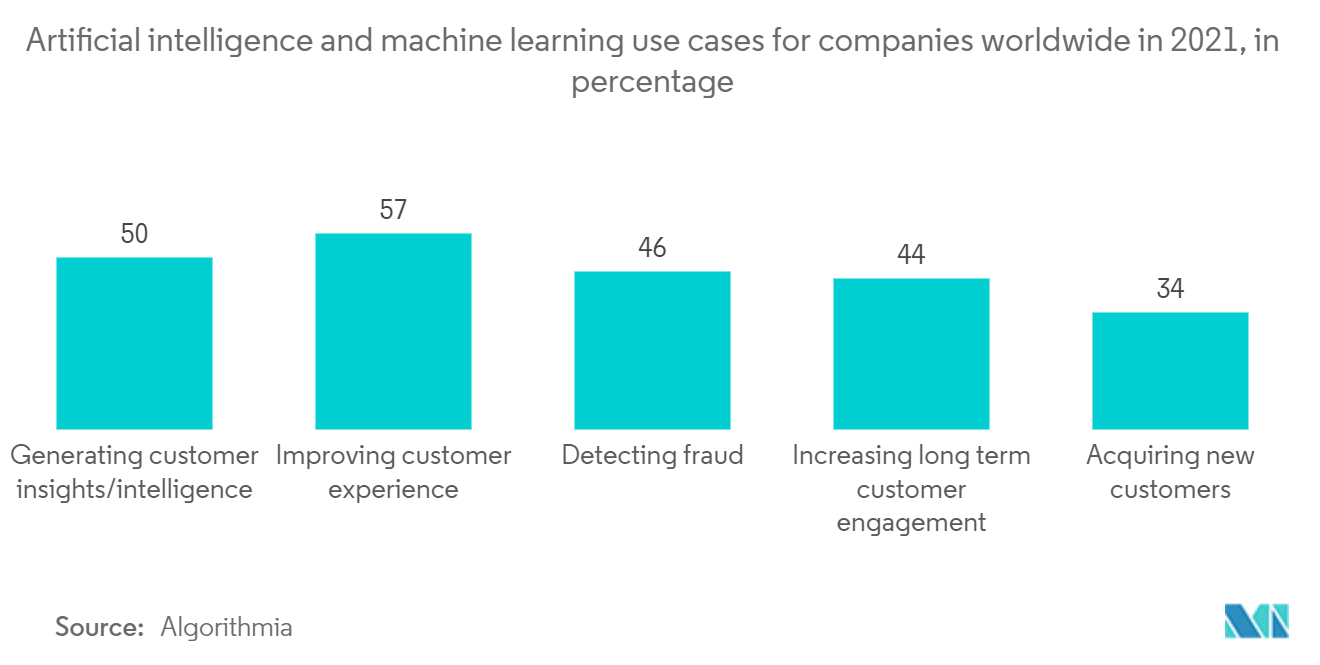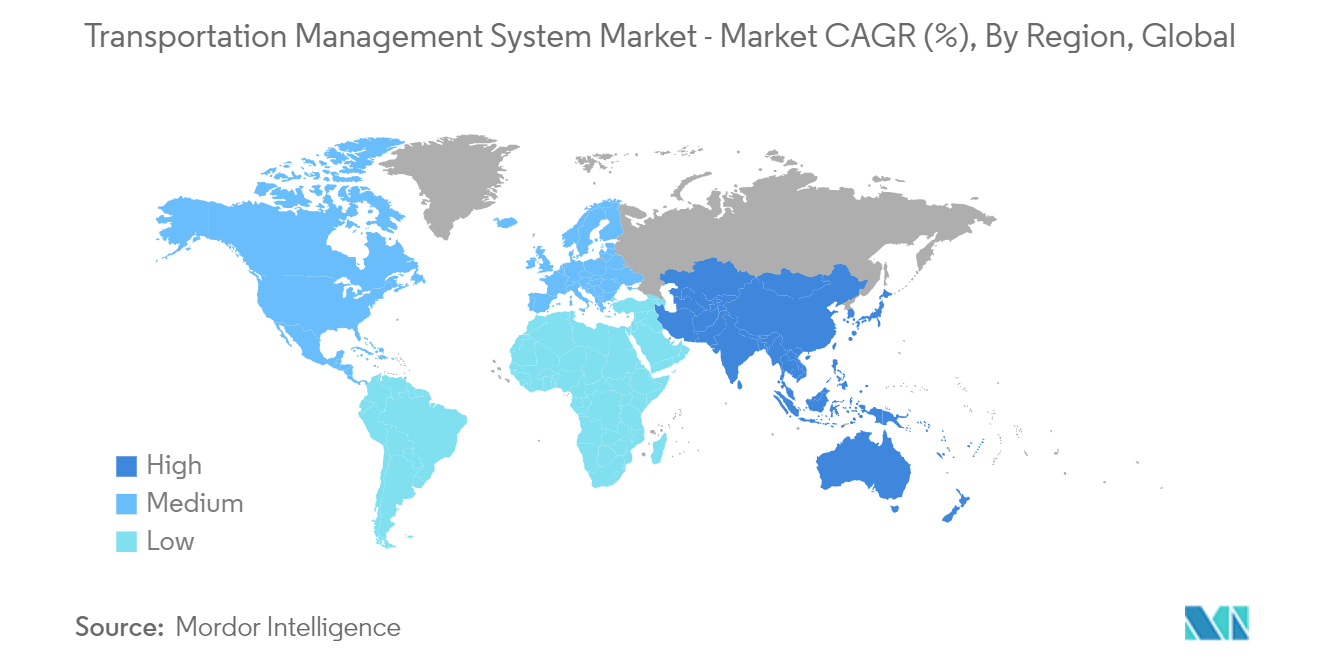Market Trends of Transportation Management System Industry
Increasing Use of Cloud and Artificial Intelligence in Supply Chain Management
- Industry landscapes are evolving rapidly primarily due to the wide adoption of artificial intelligence (AI), which includes computer vision and machine learning (ML) technology. The adoption of AI solutions and services is anticipated to be augmented by the need to achieve robotic autonomy to remain competitive in a global market. The market for artificial intelligence is expanding across the globe as a result of the growth of data-based AI and advancements in deep learning.
- The growing trend of multi-cloud functionality and the expanding demand for cloud-based intelligence services are boosting the market's overall growth. Modern AI tools add new and increased value to cloud computing. This factor is essential for incorporating new technologies within the sector, improving process viability overall. AI software also helps close the technological gap between modern breakthroughs and cloud computing.
- Consequently, since the AI cloud facilitates the convergence of two technologies, AI software and hardware, cloud computing and artificial intelligence are well combined in an AI cloud hybrid system. It helps to create a cloud environment similar to the human brain. Hence, the businesses functioning in the market are widely adopting and using AI through the cloud delivery of AI software-as-a-service., enabling them to utilize AI capabilities.
- For instance, recently this year, Oracle announced that it would open up its ERP applications platform to customer developers and partners. It also unveiled new B2B commerce services and declared a wide variety of additions to its supply chain management (SCM), enterprise planning management (EPM), and human capital management (HCM) Fusion Cloud offerings.
- As per Algorithmia, in 2021, the top use cases for artificial intelligence and machine learning were for increasing customer experience, i.e., 57%, whereas the total share for generating customer insights/intelligence was around 50%; detecting fraud stood at about 46%. That indicated a vast scope of benefits associated with the various use cases for artificial intelligence and machine learning. Hence, with the rise in the adoption of artificial intelligence, the market is expected to witness significant growth opportunities throughout the forecast period.

Asia-Pacific to Witness Fastest Growth
- Asia-Pacific is expected to witness the fastest growth rate due to the increasing international trade, particularly in emerging economies like China and India. Also, factors like the rapid pace of e-commerce growth, a complex mix of investment drivers, global trade, manufacturing growth (Made in China, for instance), and new infrastructure operations are expected to provide various lucrative market growth opportunities in the region.
- In the Asia-Pacific region, smartphone penetration is increasing, along with increasing disposable income. These factors support the growth of e-commerce in the region. India is another region that can be considered a significant and emerging market for TMS vendors; it is currently experiencing increased investments from shippers and third-party logistics (3PL) providers, thus providing scope for transportation technologies and TMS applications. Therefore, a proper TMS will be required to cater to the maximum number of customers. This will provide increased opportunities for the TMS market.
- The Asia-Pacific region creates unique challenges for organizations operating in the area. Some of the challenges include multiple languages and currencies, complex trade agreements (like the United States and China), regulations and compliance/legal requirements, varied economic conditions, developing infrastructure, and the increasing importance of green and sustainable transportation. The presence of these challenges throughout the region is augmenting the market's growth significantly.
- According to Boeing, by 2037, China plans to have around 740 freighters in its cargo airplane fleet; it had only 170 freighters in 2017. Therefore, with such an increase in freighters, the need for TMS will also increase. TMS can dramatically reduce complexity by integrating fleet and logistics management throughout the network. Also, China is considered the third largest transportation market after the United States. With its growing economy, high levels of urbanization, and proliferation in the e-commerce industry, China is estimated to be a significant contributor to the TMS market, despite the considerable number of Chinese companies already using TMS.
- Moreover, Sensata, an electronics company with operations spread across 12 countries, including China, Japan, Korea, and Malaysia, initially managed its transportation in a silo, with very little transportation network visibility and even less collaboration among the company's various locations. In the first quarter of this year, the company unveiled the Sensata | Xirgo OTAC (Over the Air Charging) Tracker Solution, which enables customers to securely charge and store up to about 400 compatible asset trackers at once per charging station to manage assets where permanent attachment or external power is a challenge. Fleet operators and large retailers with shipping yards and distribution centers are the perfect candidates for the solution since they can save money by expediting the deployment and charging of asset trackers.

